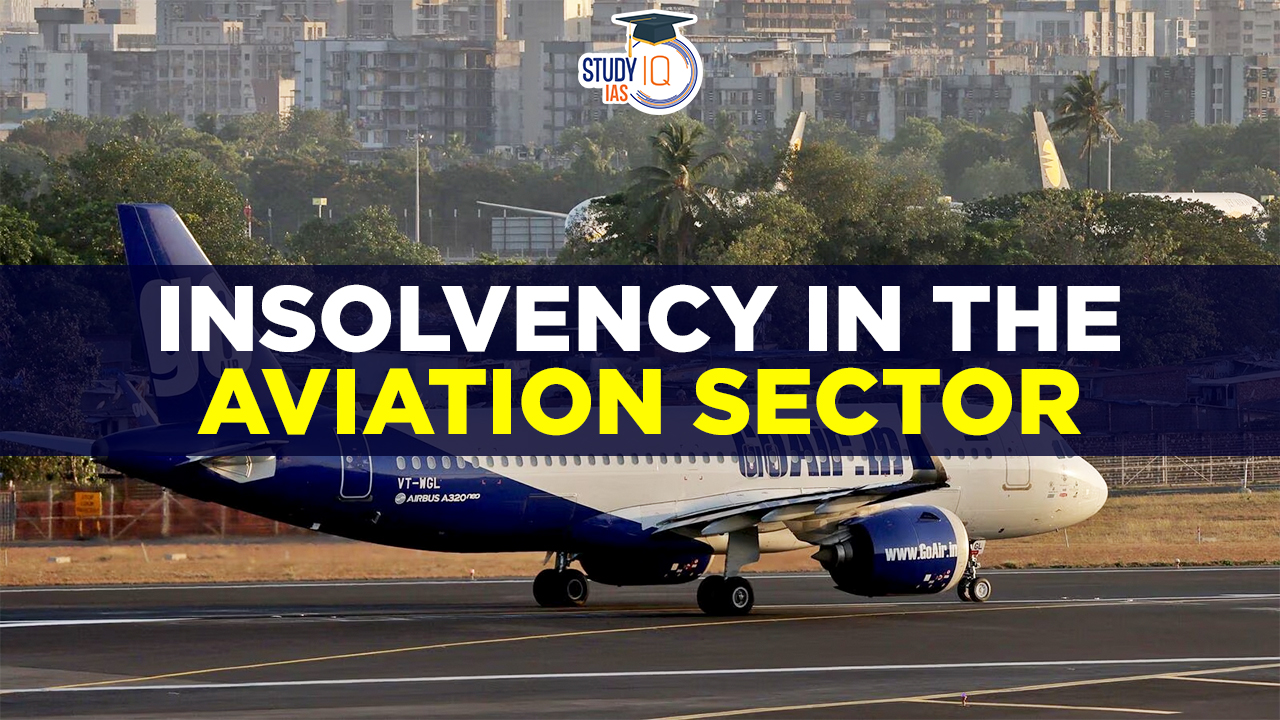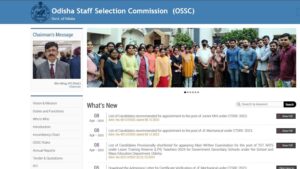Table of Contents
Context: Air Carrier Go First recently filed for voluntary insolvency at the National Company Law Tribunal. It has also suspended its flights.
What is Voluntary Insolvency?
- Voluntary insolvency means that the company has accepted its business is insolvent. It is a process in which the company says it cannot pay debts and needs help from someone to sort it out.
- When the company goes insolvent, it can proceed to voluntary liquidation. It is a time-bound process which needs to be completed in 270 days from the date of commencement of Voluntary Liquidation.
Why did Go First File for Voluntary Insolvency?
- Impact of COVID Pandemic: The Covid crisis has had a massive impact on the aviation industry and air traffic in India. Indian airlines and airports incurred an estimated loss of Rs 19,564 crore and Rs 5,116 crore, respectively, in 2020-21 due to severe disruption caused by the pandemic.
- Import Dependency: India is among the top importers of crude oil, depending on foreign fuels to meet 85% of its requirements. A higher price of crude oil in the international market will directly hike the ATF rates and consequently lead to high ticket prices.
- Depreciation of Indian Rupee: Indian rupee emerged as Asia’s worst performing currency in 2022 depreciating around 11.5% against the US Dollar. Such depreciation puts considerable pressure on the already high import prices of crude and raw materials, paving the path for higher imported inflation.
- Lack of Funds through IPO: The Go First wanted to raise Rs 3,600 crore since 2015 through an IPO to meet its debt repayment and working capital requirements. But weak market sentiment and the cold response of owners on infusing funds gave a blow to its prospects.
- Unavailability of Aircrafts: The Go First is facing financial crunch also due to non-supply of engines by US-based jet engines manufacturer Pratt and Whitney (P&W) that has forced grounding of more than 50 planes.
- Dip in Market Share: Go First had 6.9% market share in March 2023, slipping from 8.9% in 2022.
What will National Company Law Tribunal Do (NCLT)?
- NCLT within 14 days of receipt of an application passes an order to accept or in case reject the application of insolvency.
- Under the Insolvency and Bankruptcy Code 2016 (IBC), if the corporate entity (debtor) becomes insolvent and commits a default, a financial creditor, an operational creditor or the corporate debtor itself may approach the NCLT – the Adjudicating Authority for insolvency resolution.
Implications of Insolvency
- Bad Omen for Indian Aviation Sector: Go First’s bankruptcy filing would be the second in five years after Jet Airways failure in April 2019 in the aviation industry. This trend of insolvency is not a very good sign for the Indian Aviation market.
- Shares of Aviation Stocks Rise: Go First’s bankruptcy means lower competition for peers. The shares of InterGlobe Aviation hiked 8%, SpiceJet surged about 6% while defunct airlines Jet Airways’ shares also surged 5%.
- Fares to Soar: With Go First’s bankruptcy filing, it is expected that other airlines will benefit, leading to a 10-15% increase in air fares on domestic leisure routes.
- Opportunity for Slots: Go First’s grounding of Aircrafts also offers a chance to competitors to grab precious airport slots. Market leader IndiGo is also expected to mount additional flights on routes where Go First had a significant presence.
Challenges Faced by India’s Aviation Sector
- Profitability of the Sector: Most airline operators have poor financial health. The situation worsened during the COVID-19 pandemic due to lockdowns and flight restrictions. Consistent losses drive down number of operators impacting competition and efficiency.
- Poor Rural Connectivity: With mega airports controlling air and ground space, it is almost impossible to connect rural and small towns from the large metros.
- Policy Lacunae: There are many policy gaps that remain to be addressed e.g., the Aircraft Act, 1934 and Aircraft Rules, 1937 have not kept pace with modern technology in aerospace. This has increased costs to the industry and ultimately affected passenger growth.
Government Schemes for Aviation Sector
- Emergency Credit Line Guarantee Scheme (ECLGS): It is a part of Aatmanirbhar Bharat Abhiyaan to support eligible Micro, Small and Medium Enterprises (MSMEs) and business enterprises in meeting their operational liabilities and restarting their businesses in the context of the disruption caused by the COVID-19 pandemic
- Digi Yatra: Digi Yatra policy is an initiative launched by Ministry of Civil Aviation for providing passengers seamless and hassle-free experience at airports without the need for verification of ticket and ID at multiple touch points.
- UDAN: Ministry of Civil Aviation’s flagship program Regional Connectivity Scheme UDAN (Ude Desh ka Aam Nagrik) has the objective to fulfil the aspirations of the common citizen with an enhanced aviation infrastructure and air connectivity in tier II and tier III cities. The government has also planned to develop 100 airports by 2024 under this scheme.
- Greenfield Airports: The Union Ministry of Civil Aviation has granted in-principle approval for the establishment of 21 greenfield airports across the country.
- NABH (Nextgen Airports For Bharat): This scheme aims to increase the number of Airports and their capacity to handle traffic in India.
- Budgetary Allocation (2023-24): The Central Government has allocated Rs 3,113.36 crore to the union civil aviation ministry.


 Daily Quiz 18 April 2025
Daily Quiz 18 April 2025
 OSSC CGL Syllabus 2025 and Exam Pattern ...
OSSC CGL Syllabus 2025 and Exam Pattern ...
 AI and its Regulation in India, Limitati...
AI and its Regulation in India, Limitati...





















